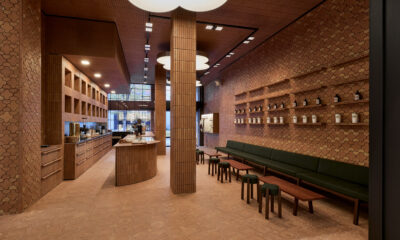Across the globe, the number of empty churches and other houses of worship is rising, and these structures – often architectural gems – are attractive to operators of restaurants, hotels, brewpubs, mixed-use developments and other uses, The New York Times reports.
The closings stem largely from a drop in church attendance during the Covid pandemic and fewer people, especially younger adults, affiliated with religious organizations than in the past. That, in turn, has meant many denominations are combining their congregations, which leaves some church buildings empty.
As a result, many vacant houses of worship are being converted to restaurants, breweries, hotels, art centers, theaters and even sports complexes. Some abandoned churches have also been transformed into mixed-use developments, blending retail and residential spaces, and affordable housing.
Such projects are known as adaptive reuses in architectural circles. One example given by the Times: In 1983, the Episcopal Church of the Holy Communion in New York, a Gothic Revival structure, was converted into a disco called the Limelight. The structure has since gone through several iterations, including a shopping mall, a gym and a market.
Not surprisingly, such transformations can hit a number of snags, including a need for a zoning changes, and a need for city, state or federal approval for alterations if the church is a landmark structure or in a historic neighborhood. (Churches are often deconsecrated before the buildings hit the market.)
Some renovation challenges only become apparent once the layers of Sheetrock or plaster are peeled back. That can reveal a weak, outdated infrastructure that is most likely out of code, said Jay Colombo, an architect at the Michael Hsu Office of Architecture in Austin who recently worked to convert an old church in Houston into a new outpost of Loro, an Asian barbecue restaurant. “Even the studs can be rotted away,” he said.
Advertisement
Additionally, energy-efficient heating and air-conditioning, updated electrical wiring, new plumbing, and internet accessibility must all be installed. If mold or asbestos is found, it must be removed. And fire codes for commercial businesses typically require new or updated sprinkler systems.
Click here for more from the Times story on the challenges and opportunities presented by such projects. (Note: the full article is behind the newspaper’s pay wall.)


 Headlines1 week ago
Headlines1 week ago
 John Ryan2 weeks ago
John Ryan2 weeks ago
 Headlines1 week ago
Headlines1 week ago
 Headlines2 weeks ago
Headlines2 weeks ago
 Headlines1 week ago
Headlines1 week ago
 Retail Buzz3 days ago
Retail Buzz3 days ago
 Headlines1 week ago
Headlines1 week ago
 Headlines1 week ago
Headlines1 week ago















